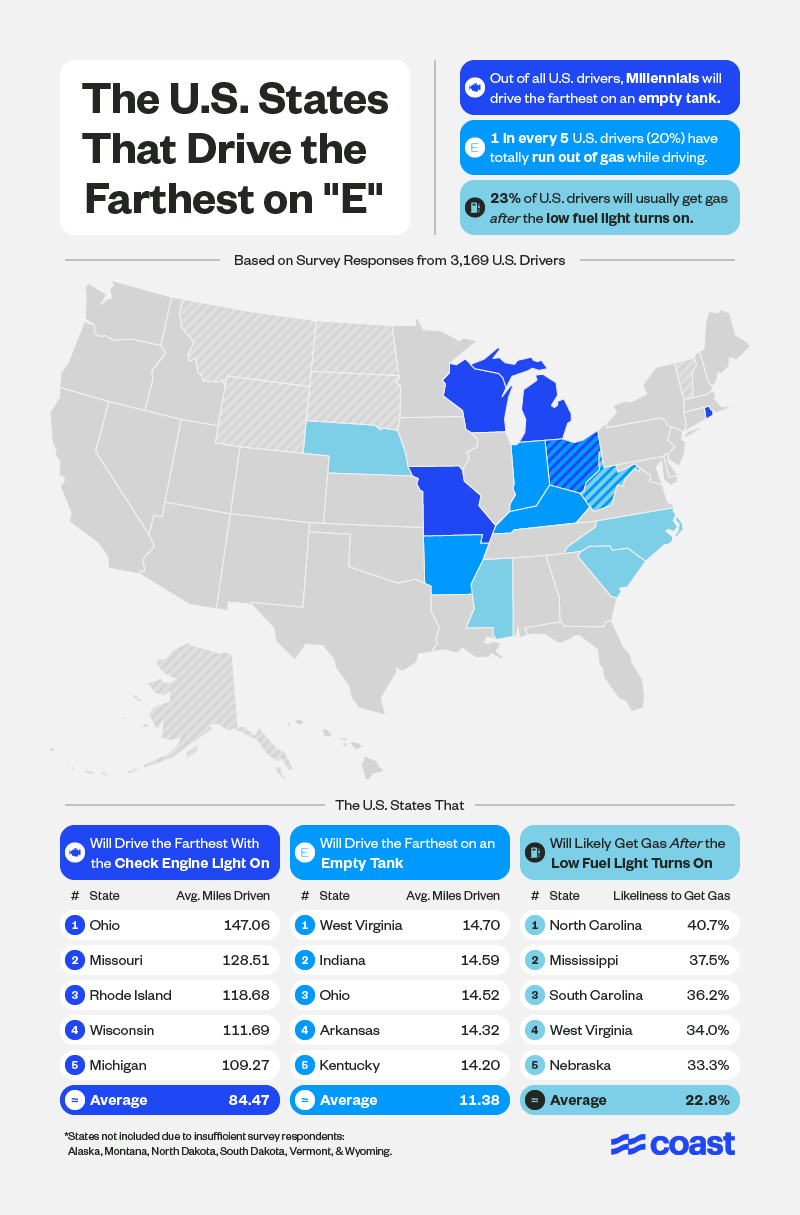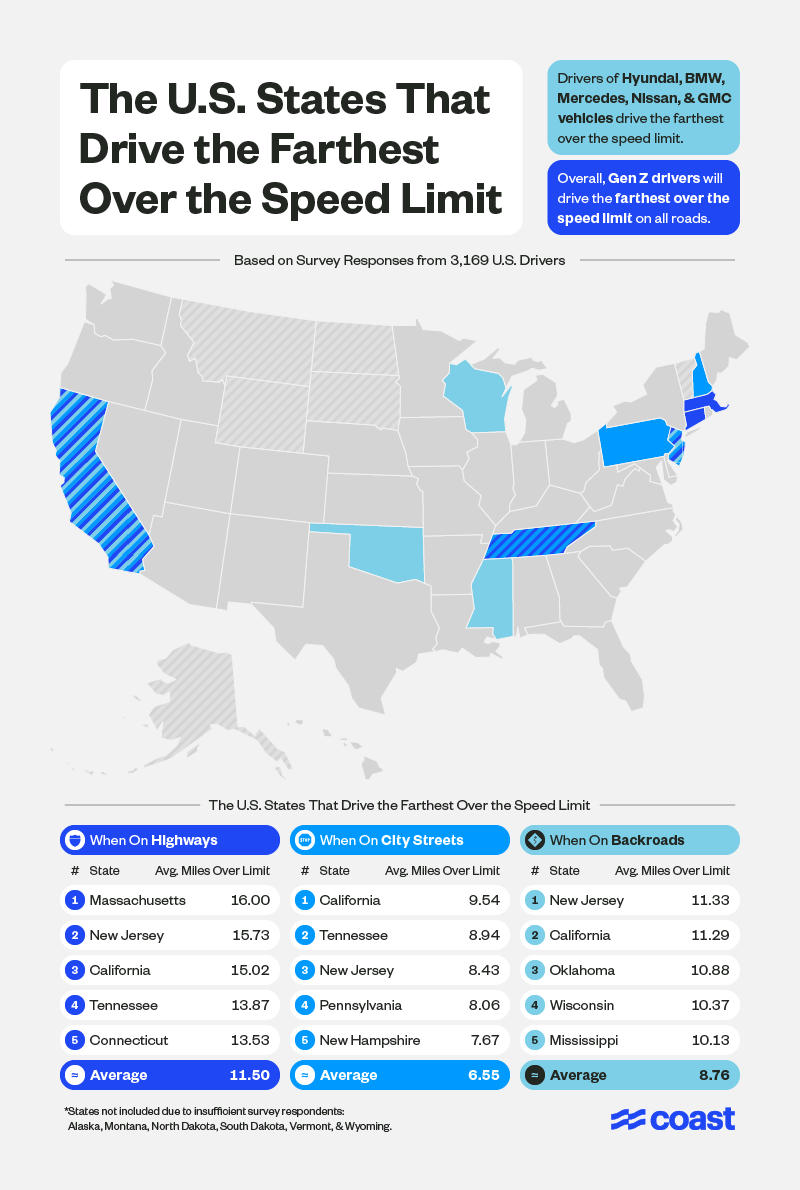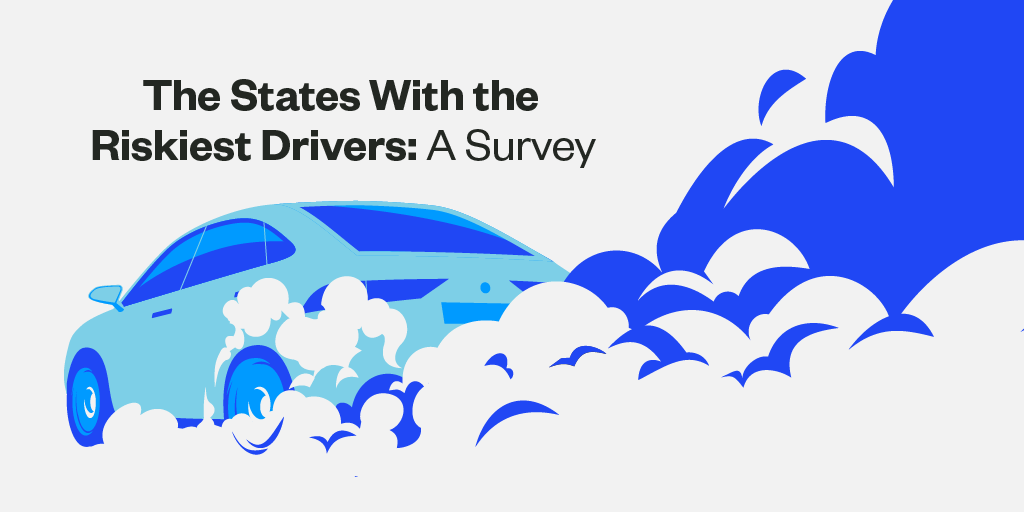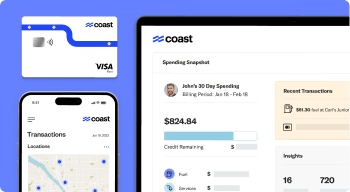The national average gas price is inching closer to $4.00 per gallon, according to AAA. As fuel and maintenance costs continue to rise, drivers are increasingly willing to take risks that jeopardize road safety. From speeding to neglecting vehicle maintenance alerts, our choices behind the wheel carry significant consequences. To gain a deeper understanding of risky driving behaviors, we surveyed over 3,000 licensed drivers across the U.S., comparing states across several key metrics to answer the following questions:
- How many miles are Americans willing to drive on an empty gas tank?
- How many miles are Americans willing to drive once a check engine light turns on?
- How far over the speed limit are Americans willing to drive? (on different road types)
Whether you’re commuting alone, shuttling your kids around, or overseeing a fleet of vehicles for your business, understanding these risky driving habits can help promote safer and more efficient road use for everyone.
Keep reading to discover the risky driving behaviors prevalent in your state, and to see if you participate in any of these practices yourself.
Which States Have the Riskiest Drivers?
- Out of all states, Ohio motorists are willing to drive the farthest distance after a check engine light turns on––147 miles (54% farther than the survey average of 84 miles). What’s more, car insurance experts recommend driving no more than 50-100 miles once the check engine light turns on.
- Ohio drivers are also willing to drive the third farthest (after West Virginia and Indiana) after a low fuel light turns on––14.52 miles on an empty tank (the survey average is 11.38 miles).
2. Tennessee
Tennessee’s Risk Score: 67.7
- Where Ohio drivers are riskier with fueling and car maintenance, Tennesseans are riskier with speeding. Tennessee drivers are willing to drive the second farthest over the speed limit on city streets (8.94 miles over; the survey average is 6.55) and the fourth farthest over the speed limit on highways (13.87 miles over; the survey average is 11.5).
3. Oklahoma
Oklahoma’s Risk Score: 65.6
- In Oklahoma, over a quarter of drivers (28%) typically fuel up after the low fuel light turns on –– 20% higher than the survey average. Also, Oklahoma drivers are willing to drive the third farthest over the speed limit on backroads (10.88 miles over; the survey average is 8.76) and willing to drive 44 days after a check engine light turns on, compared to the average of 30 days.
4. California
California’s Risk Score: 61.4
- Drivers in the Golden State are willing to drive the farthest over the speed limit on city streets (9.54 miles over), the third farthest over the speed limit on highways (15.02 miles over), and the second farthest over the speed limit on backroads (11.29 miles over).
- 27% of California motorists usually don’t fuel up until after the low fuel light turns on. Given average CA pump prices are hovering around $5.50 a gallon, we understand why some Californians wait until the last minute to gas up.
5. Alabama
Alabama’s Risk Score: 59.8
- Rounding out the top five, Alabama drivers are willing to drive 107 miles after a check engine light turns on––24% farther than the survey average. What’s more, average drivers there are willing to drive 57 days after the check engine light turns on.
Which States Wait the Longest to Fill Up?

Whether it’s pushing the boundaries on an almost empty gas tank or ignoring that nagging check engine light, drivers in certain areas tend to wait longer than others before taking action.
This delay might be a result of rising gas prices, making drivers more hesitant to fill up until absolutely necessary. For instance, drivers in West Virginia and Indiana are willing to drive up to an additional 15 miles before fueling up when their gas gauge hits “E.”
About 23% of U.S. drivers typically wait until the low fuel light turns on to gas up, whereas a majority of 77% prefer to fill up before this warning. Interestingly, women are more likely than men to wait for the light to turn on before refueling.
Alarmingly, 1 in every 5 U.S. drivers (or 20%) have completely run out of gas while driving at some point, with men being statistically more likely to find themselves in this situation compared to women.
Millennials lead the pack in risky driving behavior associated with low fuel and ignoring maintenance warnings. They are more willing to drive farther on “E” and with a check engine light on compared to other age groups.
As for driving with the check engine light on, survey responses provide some intriguing insights. The top reasons people delay maintenance once the light comes on are financial concerns (64%), a busy schedule (64%), and a lack of transportation alternatives (34%).
Which States Drive the Farthest Over the Speed Limit?

Speeding is a risky behavior that varies significantly across states. Whether it’s due to lenient speeding regulations or low ticket fines, some states have drivers who are more willing to put the pedal to the metal.
Drivers in Massachusetts and New Jersey lead the nation in speeding on the highway, driving about 16 miles over the posted speed limit on average.
Our survey also reveals differences across genders and generations in speeding behavior. Men are more likely than women to drive over the speed limit, with male drivers willing to go 12.24 miles over the limit on highways, compared to 10.98 miles for female drivers.
Interestingly, Gen Z drivers are willing to drive the fastest over the speed limit, irrespective of the type of road. The average Gen Zer is willing to go 13 miles over the speed limit on highways, 8 miles over on city streets, and 10 miles over on backroads.
If you’re on the road and spot a Mercedes, BMW, Hyundai, Nissan, or GMC, proceed with caution. Drivers of these makes are statistically more likely to exceed the speed limit on highways (by 12 to 14 miles) than those of other brands.
Risky Driving by the Numbers
When it comes to risky driving behaviors, Americans seem willing to push the boundaries of safety, especially in regards to ignoring vehicle maintenance warnings and driving extra miles for cheaper gas.
Many drivers continue driving long distances even after check engine and change oil lights illuminate their dashboard. Contrary to mechanics’ recommendations, which usually advise immediate attention to these warnings, some people might drive for hundreds of miles in search of a “trusted” mechanic, to delay maintenance costs, or simply out of convenience.
Similarly, our survey reveals that drivers are willing to drive an average of 5.62 miles to find cheaper gas. While it may seem like a practical decision, one has to consider if the additional miles are genuinely cost-effective. Beyond that distance, any financial gains from the cheaper fuel are offset by the additional gas it takes to get there, not to mention the wear and tear on the vehicle.
Next, Americans are willing to drive 6.6 miles over the speed limit on city streets, 11.5 miles over on highways, and 8.8 miles over on backroads. As a result, the average U.S. driver has received 1.5 speeding tickets in their lifetime.
Lastly, we asked U.S. drivers which hazardous driving behaviors they’ve done over the past six months, and here were the most common:
- Speeding (50.5%)
- Honking (36.5%)
- Texting while driving (28.1%)
- Running a red light (12.7%)
- Flashing headlights (11.5%)
- Road rage (gestures, shouting, etc.) (11.1%)
- Tailgating (8.6%)
What Measures Do We Take to Conserve Gas?
Drivers across the U.S. have a few fuel-saving tactics up their sleeves to save both fuel and money. We asked U.S. drivers what measures they regularly take to conserve gas and here were the most common responses:
- Driving at a steady speed (60.3%)
- Maintaining proper tire inflation (56.9%)
- Avoiding excessive idling & turning off the engine when parked (49.2%)
- Closing windows and using air conditioning (37.9%)
- Using cruise control on highways (34.4%)
- Avoiding rush hour to reduce stop-and-go driving (31.4%)
- Using the vehicle’s eco mode setting (25.6%)
Topping the list is maintaining a steady speed and avoiding sudden accelerations and decelerations, with 60.3% of drivers swearing by it. This smooth driving style extends the vehicle’s lifetime and significantly boosts fuel efficiency.
Not far behind, at 56.9%, is the often-overlooked but crucial habit of maintaining proper tire inflation. Well-inflated tires offer less rolling resistance, making it easier for the vehicle to move and consume less fuel in the process.
Nearly half of all drivers (49.2%) also make a point to avoid excessive idling. By turning off their engines when parked for extended periods, they manage to cut down on both fuel usage and emissions, making it a practice that is economically and environmentally sensible.
Another 37.9% of drivers opt to keep their windows closed while using air conditioning. Contrary to the common perception that air conditioning is a fuel guzzler, the aerodynamic drag created by open windows can actually result in greater fuel consumption.
Rounding out the top 5 tried and true methods that many drivers live by is using cruise control on the highway, with 34.4% of drivers flipping the switch. Cruise control helps drivers maintain a consistent speed on the highway, minimizing fuel consumption.
Closing Thoughts
Americans have diverse attitudes towards driving, sometimes making choices that risk vehicle longevity and personal safety. Awareness of these behaviors and their potential consequences is the first step toward making better, safer decisions on the road.
For businesses managing fleets, this understanding is critical. Knowledge of driver behaviors can inform better training programs, while real-time monitoring can provide actionable insights into how a fleet is being utilized. Effective management can lead to lower insurance costs, fewer accidents, and a more successful business operation.
Coast provides fleet and fuel cards designed to make fuel management simple, efficient, and safe for fleets of all sizes. By partnering with Coast, businesses can mitigate risks, monitor fuel consumption, and ensure their drivers make the safest choices possible.
Methodology
To delve into the risky driving habits of Americans, we conducted a comprehensive survey involving 3,169 licensed drivers across the U.S. These respondents ranged in age from 18 to 70 years old. The survey ran over a two-week period, from August 15 to August 28, 2023.
For the state ranking portion of our study, we evaluated states across several metrics that reflect risky driving behaviors. These include the willingness to drive on an empty gas tank, to fill up only after the low fuel light turns on, to continue driving despite an illuminated check engine light, and to exceed the speed limit on different types of roads like city streets, highways, and backroads.
Based on the survey responses, we assigned states with a score of 0-5 for each metric above, with a score of 5 representing the riskiest conditions. We determined each state’s total score from the total of its individual factor scores, which were weighted according to their level of risk. Individual factor scores were then added together to give each state a final score from 0-100. Higher scores represent a greater tendency for risky driving behaviors.
It’s worth noting that Alaska, Montana, North Dakota, South Dakota, Vermont, and Wyoming were excluded from the state rankings due to an insufficient number of respondents from those states.


